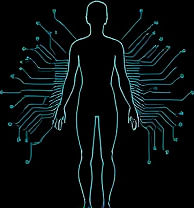Enhancing Neural Plasticity with Effective Exercises
 by Shanie Goodwin
by Shanie Goodwin
Neural plasticity exercises offer a pathway to improve brain function and overall wellness through targeted activities. By incorporating simple routines, individuals can boost cognitive abilities and adapt to new challenges, making it essential for personal enhancement and health optimization.

Neural plasticity refers to the brain's remarkable ability to adapt and reorganize itself. This process allows for learning new skills and recovering from injuries. Engaging in neural plasticity exercises can significantly support this adaptation.
These exercises involve a range of activities that stimulate the brain. For instance, cognitive tasks like puzzles or memory games help build new connections. Regular practice of such routines promotes better mental agility.
One key area to explore is how physical movement influences brain health. Activities such as aerobic workouts or yoga encourage blood flow to the brain. This increased circulation supports the formation of new neural pathways.
In biohacking, combining exercises with other elements can amplify results. Certain natural supplements, like those containing omega-3 fatty acids, may aid cognitive function when paired with routine activities. Users often report improved focus from this approach.
Wearable devices play a role in tracking progress. Tools that monitor heart rate or sleep patterns provide data on how exercises affect the body. By analyzing this information, individuals can refine their routines for optimal results.
Types of Neural Plasticity Exercises
There are several categories of exercises to consider. First, mental challenges stand out as foundational. Solving crosswords or learning a new language engages different brain regions. These tasks foster adaptability and resilience.
Physical exercises also matter. Brisk walking or strength training not only benefits the body but also enhances brain function. Research shows that consistent effort in these areas leads to noticeable improvements in memory and processing speed.
Mindfulness practices offer another angle. Techniques like deep breathing or visualization exercises help calm the mind. Over time, this can lead to greater emotional control and cognitive flexibility.
For those interested in technology, apps designed for brain training provide structured guidance. These programs adapt to user performance, offering personalized challenges that keep engagement high.
Integrating Exercises into Daily Life
Starting with exercises requires a simple plan. Begin by dedicating 15-20 minutes a day to cognitive tasks. This could include reading complex material or playing strategic games. Consistency is key to seeing long-term benefits.
Tracking progress with wearable tech adds a layer of precision. Devices that measure brainwave activity give insights into changes over time. Users can use this data to adjust their routines, ensuring they align with personal goals.
Nutrition supports these efforts as well. Foods rich in antioxidants, such as berries, complement exercise routines. Together, they create a holistic approach to brain health.
Many find that combining elements yields the best outcomes. For example, a morning walk followed by a session of mental challenges sets a positive tone for the day. This synergy helps in achieving sustained improvements.
The Role in Personal Enhancement
Through regular neural plasticity routines, individuals can experience profound changes. Enhanced cognition allows for better problem-solving in daily life. This boost in mental capabilities often translates to professional success and personal satisfaction.
The motivational aspect cannot be overlooked. Seeing tangible progress from these exercises inspires continued effort. People who adopt such practices often feel more empowered in their pursuit of wellness.
In the context of biohacking, these exercises align with broader themes of self-improvement. By focusing on brain optimization, enthusiasts can push their limits in innovative ways. The results include sharper focus and increased resilience to stress.
Ultimately, the journey with these exercises is about building a stronger mind. With dedication, anyone can harness their brain's potential for lasting benefits.
Practical Tips for Beginners
- Choose activities that interest you to maintain motivation.
- Set realistic goals, such as three sessions per week.
- Monitor changes in mood and cognition to gauge effectiveness.
- Experiment with combinations, like exercise and supplements, for balanced results.
By incorporating these strategies, individuals can make meaningful strides in their health journey. The potential for growth through neural plasticity exercises makes it a cornerstone of modern wellness practices.
